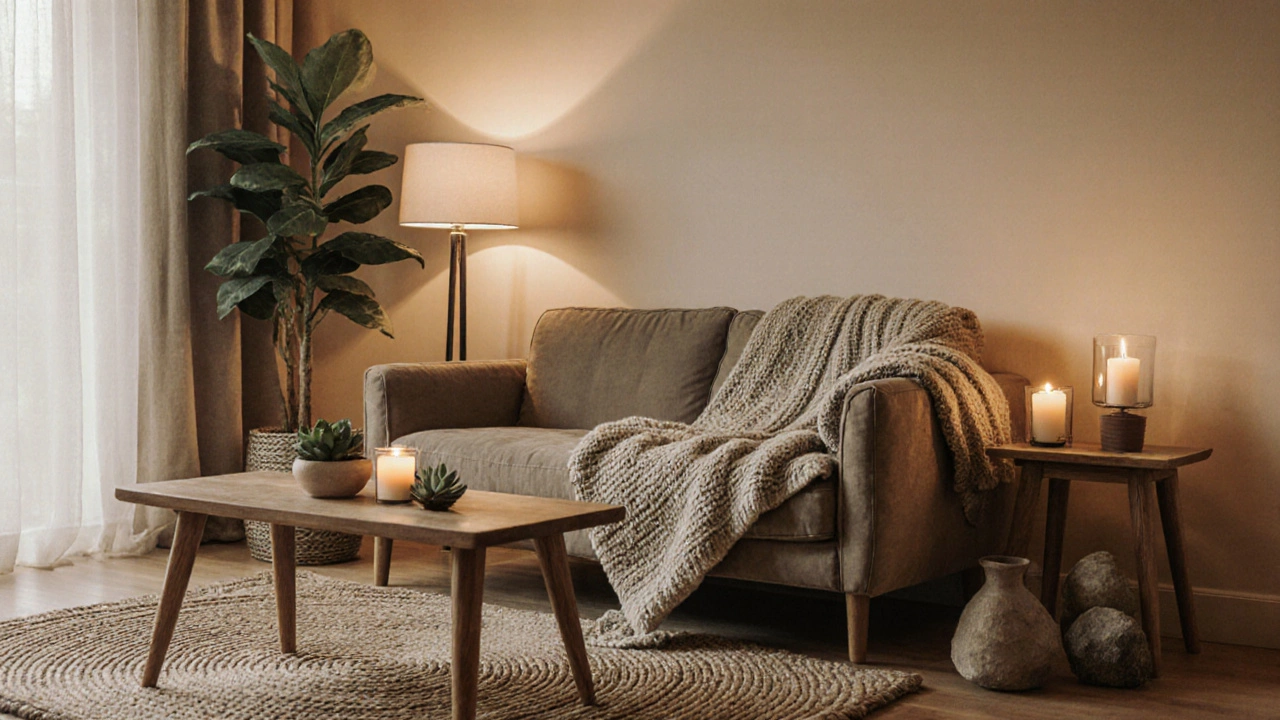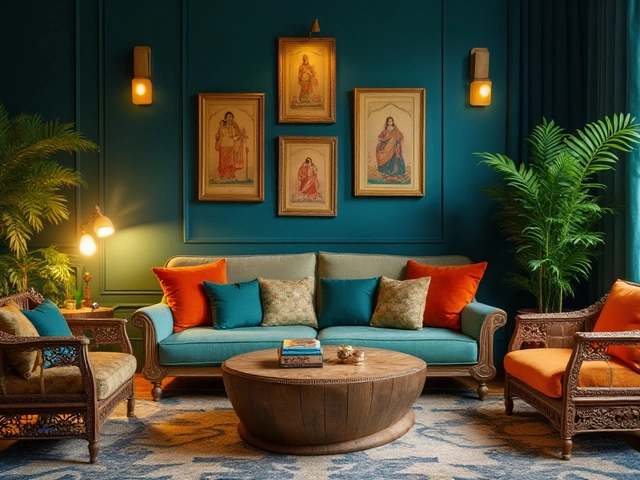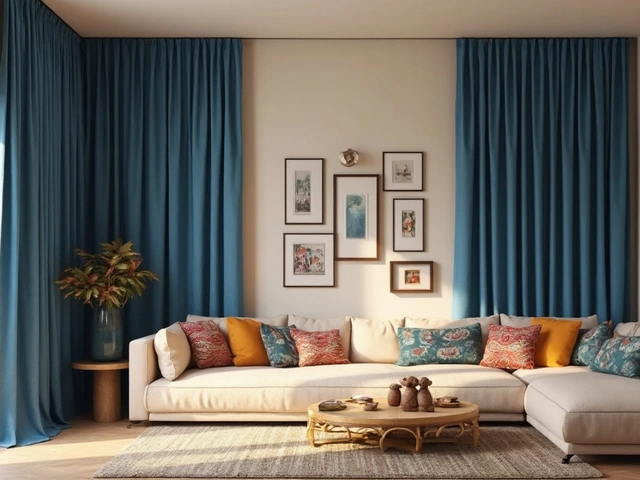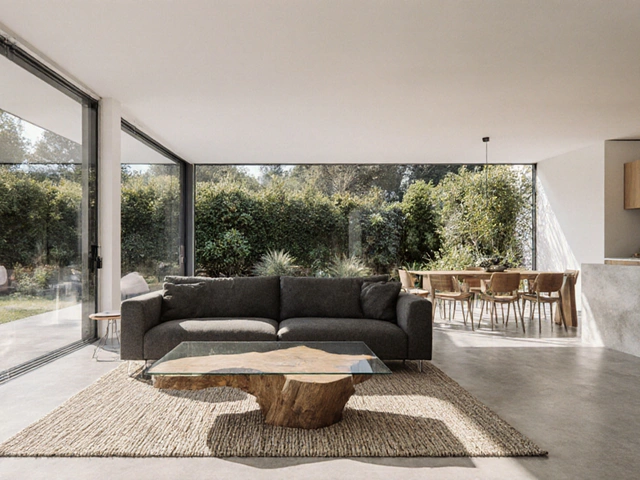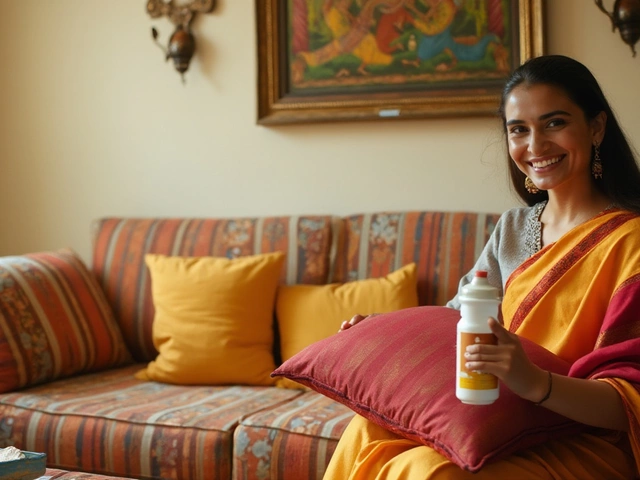Cozy Style Selector
Find your perfect cozy style based on your space and preferences. This tool recommends styles from the article that best match your needs.
Your Recommended Style
Ever walked into a room and felt an instant sense of comfort, like the space was giving you a warm hug? That’s the power of a cozy decorating style. It’s not about over‑stuffing a space or slapping on gaudy accessories; it’s a thoughtful blend of textures, colors, and layouts that invite you to linger. Below you’ll discover which decorating styles naturally feel cozy, how to mix their best traits, and practical steps to turn any living room into a snug sanctuary.
What Makes a Style "Cozy"?
Before we dive into specific aesthetics, let’s break down the ingredients that create coziness. Think of them as a recipe:
- Soft, tactile materials - plush throws, woven rugs, cushy pillows.
- Warm, muted color palettes - earth tones, creamy whites, gentle greys.
- Layered lighting - floor lamps, table lamps, candles that create depth.
- Natural elements - wood, stone, indoor plants that add life.
- Personal touches - family photos, handmade items, books.
When a decorating style embraces most of these elements, it earns the "cozy" label.
Scandinavian Design - Minimalist Warmth
Scandinavian design is a minimalist style that emphasizes light, natural materials, and functional simplicity. Originating from the cold Nordic climate, it uses bright whites and pale woods to reflect daylight and create a calm ambience.
The hallmark of cozy Scandinavian interiors is the strategic use of soft textiles - think chunky knit blankets, faux‑fur cushions, and woven rugs that add warmth without clutter.
Because the palette stays neutral, you can easily layer deeper hues like muted blues or soft greys for depth, keeping the space feeling airy yet inviting.
Country Cottage Style - Rustic Comfort
Country cottage style blends rustic woodwork with pastel accents, delivering a lived‑in feel that’s both charming and relaxed.
Key cozy elements include distressed wooden furniture, floral or gingham fabrics, and a generous amount of natural light filtered through sheer curtains. A well‑placed fireplace becomes the focal point, drawing family members together on chilly evenings.
Rustic Farmhouse - Hearty Homeliness
Rustic farmhouse takes the country aesthetic a step further, emphasizing exposed beams, reclaimed wood, and oversized seating.
A cozy farmhouse living room typically features a muted neutral color palette-think warm taupes, soft greys, and buttery creams-paired with chunky knit throws and metal‑accented lighting that adds a subtle industrial edge.
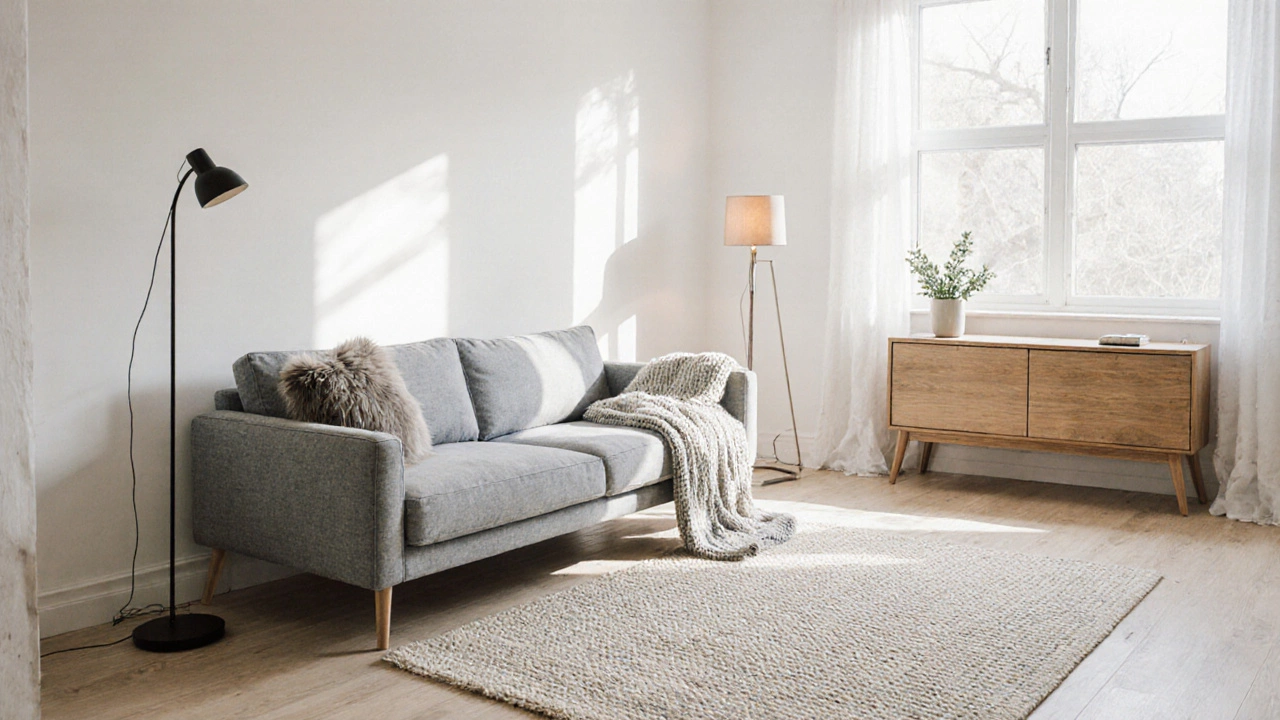
Mid‑Century Modern - Sleek Yet Snug
Mid‑century modern is known for its clean lines, iconic furniture silhouettes, and a strong connection to nature through large windows and indoor plants. While the style leans toward crisp minimalism, you can coax coziness by softening the space with layered lighting-table lamps with warm bulbs, floor lamps with fabric shades, and a few scented candles.
Pair the sleek teak sideboard with a plush velvet sofa in a deep olive hue, and you have a room that feels both sophisticated and inviting.
Industrial Loft - Urban Warmth
The industrial look, characterized by exposed brick, metal piping, and concrete floors, may seem cold at first glance. However, sprinkling in soft textiles-like a big, over‑sized wool rug or a linen throw-creates a striking contrast that softens the raw edges.
Adding a warm wood coffee table, a few indoor plants, and a vintage floor lamp brings the needed warmth, turning a loft into a welcoming den.
Key Elements Across All Cozy Styles
Even though each style has its own personality, they share a few core components that guarantee comfort:
- Texture layering - mix smooth surfaces (glass, metal) with tactile fabrics (wool, linen).
- Warm lighting - avoid harsh overhead fluorescents; opt for dimmable sources.
- Natural materials - wood, stone, and woven baskets add depth.
- Personal accessories - books, family photos, and artisan pottery make the space yours.
When you consciously incorporate these into any style, the room feels instantly cozier.
Cozy Styles Comparison
| Style | Key Cozy Elements | Typical Colors | Ideal Spaces |
|---|---|---|---|
| Scandinavian | Light woods, soft textiles, ample natural light | Whites, light greys, muted blues | Small apartments, bright lofts |
| Country Cottage | Distressed wood, floral fabrics, fireplace | Pastels, creams, soft greens | Suburban homes, garden rooms |
| Rustic Farmhouse | Reclaimed wood, oversized seating, neutral palette | Warm taupe, beige, muted ochre | Rural properties, open‑plan homes |
| Mid‑Century Modern | Iconic furniture, layered lighting, indoor plants | Olive, mustard, teal accents | Modern homes, retro‑style apartments |
| Industrial Loft | Exposed brick, soft rugs, vintage lamps | Greys, black, warm wood tones | Urban lofts, converted warehouses |
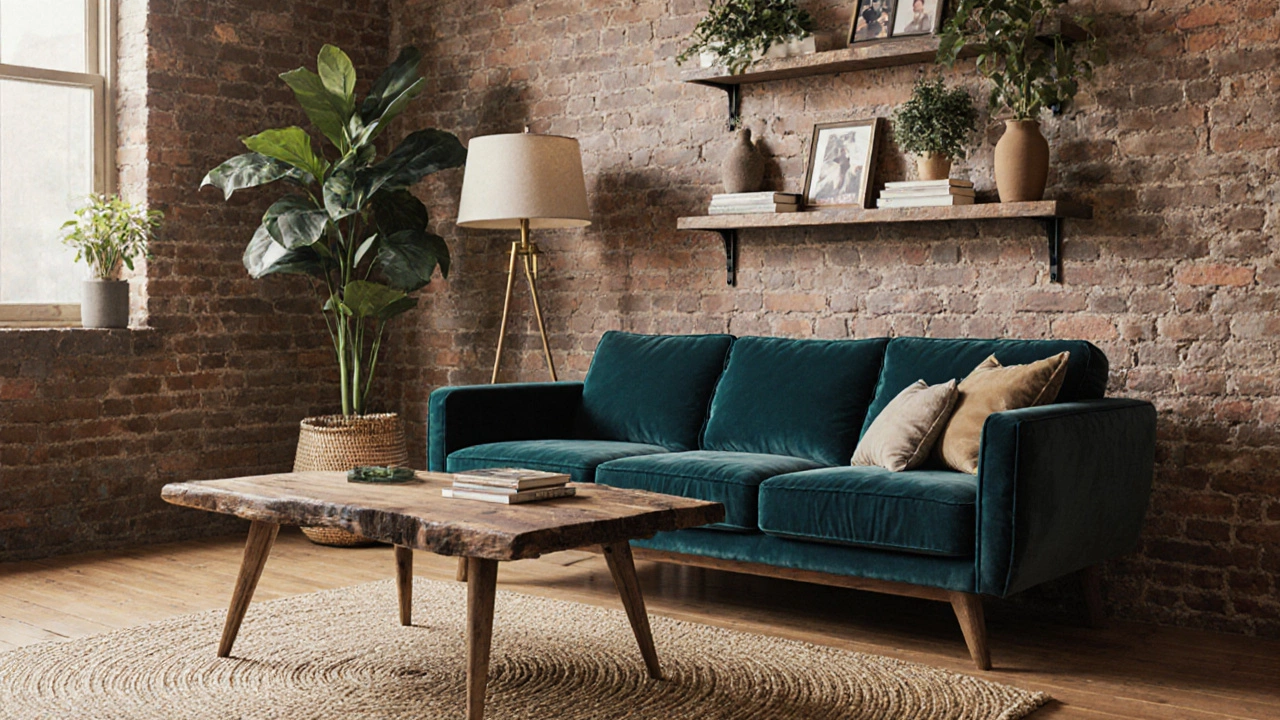
Step‑by‑Step Guide to Make Your Living Room Cozy
- Start with a neutral base. Paint walls in a soft white or light grey. This acts as a calm canvas for any style.
- Add texture. Lay down a woven rug, drape a chunky knit throw over the sofa, and place a couple of linen pillow covers.
- Choose lighting layers. Install a floor lamp with a warm bulb, a table lamp on a sideboard, and a few candle clusters for evenings.
- Introduce natural materials. Bring in a wooden coffee table, a stone side table, or a wicker basket for magazines.
- Incorporate personal items. Display a few family photos, a favorite coffee table book, or a hand‑made ceramic vase.
- Add a focal point. If possible, a fireplace or a large piece of artwork becomes the room’s anchor.
- Finish with plants. A tall fiddle leaf fig or a row of small succulents adds life and softens edges.
Follow these steps, and you’ll have a living room that feels inviting no matter which style you gravitate toward.
Common Pitfalls and How to Avoid Them
- Over‑cluttering. Too many accessories can drown the cozy vibe. Keep surfaces tidy and curate items you love.
- Cold lighting. Harsh white LEDs make rooms feel sterile. Opt for bulbs with a 2700‑3000 K color temperature.
- Focusing on a single color. Monochrome schemes can feel flat. Introduce subtle contrasts-think a warm brown rug on a beige wall.
- Ignoring scale. Oversized furniture in a small room overwhelms the space. Balance large pieces with smaller accents.
Mini FAQ - All Your Cozy‑Style Questions Answered
Which decorating style feels the most cozy for a small apartment?
Scandinavian design works great in compact spaces because its light color palette reflects natural light, and the emphasis on simple, functional furniture keeps the room uncluttered yet warm.
Can I mix rustic farmhouse with mid‑century modern and still feel cozy?
Absolutely. Pair a reclaimed wood coffee table (farmhouse) with a sleek teal sofa (mid‑century) and layer a woven rug and soft throw. The contrast adds visual interest while the textures keep the vibe warm.
Do I need a fireplace to achieve a cozy living room?
A fireplace is a strong focal point, but not mandatory. A large floor lamp, plenty of soft textiles, and a warm rug can create the same sense of invitation.
How do I choose a color palette that feels cozy?
Start with a base of neutral tones-cream, taupe, or soft grey-then add one or two warm accent colors like muted terracotta, deep olive, or gentle mustard. Keep the overall contrast low to maintain a soothing ambience.
Is it okay to use bold patterns in a cozy room?
Bold patterns work best when limited to one element-like a single patterned pillow or a rug. Let the rest of the room stay simple to avoid visual noise.
Next Steps: Personalize Your Cozy Vision
Now that you know which styles naturally feel warm, grab a notebook and sketch out your ideal living room. Choose a primary style as your baseline, then borrow one or two cozy elements from another style that speak to you. Remember, the goal isn’t to copy a magazine spread; it’s to create a space that makes you want to curl up with a book, a cup of tea, or good friends.
Start small-swap out a lamp, add a throw, or rearrange the seating to encourage conversation. As you see the room react, layer more elements until you hit that perfect balance of style and comfort. Your living room will soon become the go‑to place for relaxation, and every visitor will leave feeling as if they’ve stepped into a warm embrace.
